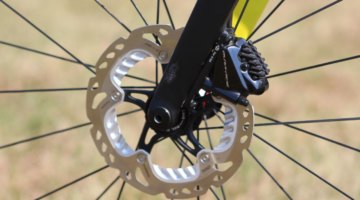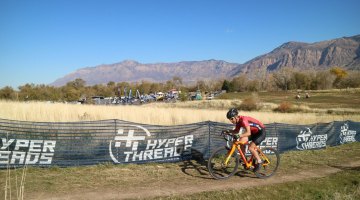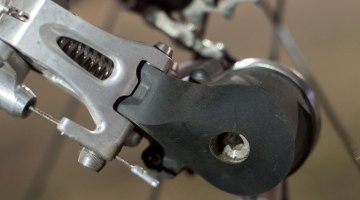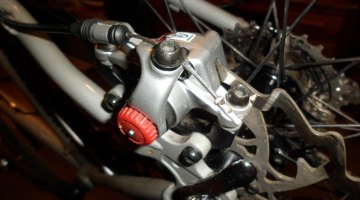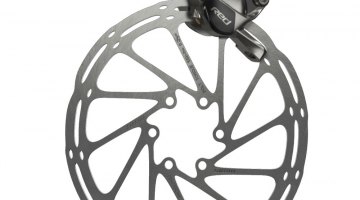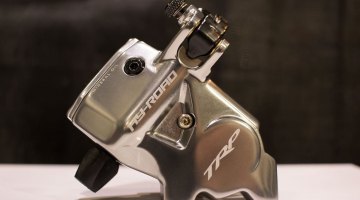The HY-RD Gets Red-Hot
It’s also worth noting that with a hydraulic master cylinder, even if it doesn’t rely on hydraulic brake lines, still represents some additional risk with both overheating or air bubbles. TRP has put in a lot of work and testing to make sure that the brakes will withstand all the descending you hope to do, even Tour de France-caliber descents, and the company has made sure that that despite braking demands that generate enough to heat to turn the rotors literally red hot, the HY-RD brake does not fade. See the video of this test in action below.
Tests simulated a steep descent with 88 turns, with maximum braking for 10 seconds, and 10 seconds off. To see the standard rotors get that hot, without boiling the brake fluid and causing brake fade or failure is impressive for sure. Larrabee said under such tests, not only the rotors got red-hot but the paint on the back of the pads was incinerated from the high temperatures, something they haven’t seen in real-world testing. Rotors with advanced cooling, such as Shimano’s finned SM-RT99 Ultimate Clad ICE-tech rotor, could possibly extend the heat tolerance of the system further.
Thankfully, for cyclocross specialists, even with a Koppenberg World Cup or Jingle Cross’ Mt. Krumpit descent, you won’t be generating anything close to such heat on a cyclocross course. However, should you have aspirations of hopping on your cyclocross bike to tackle some epic adventures with long road or gravel descents, TRP’s testing should address any concerns about brake fade when you hit 50 miles per hour. As of three hours ago, Ben Berden made a switch from Parabox to the HY-RD and will be racing on it for the season.
Read on for our afternoon ride impressions.























